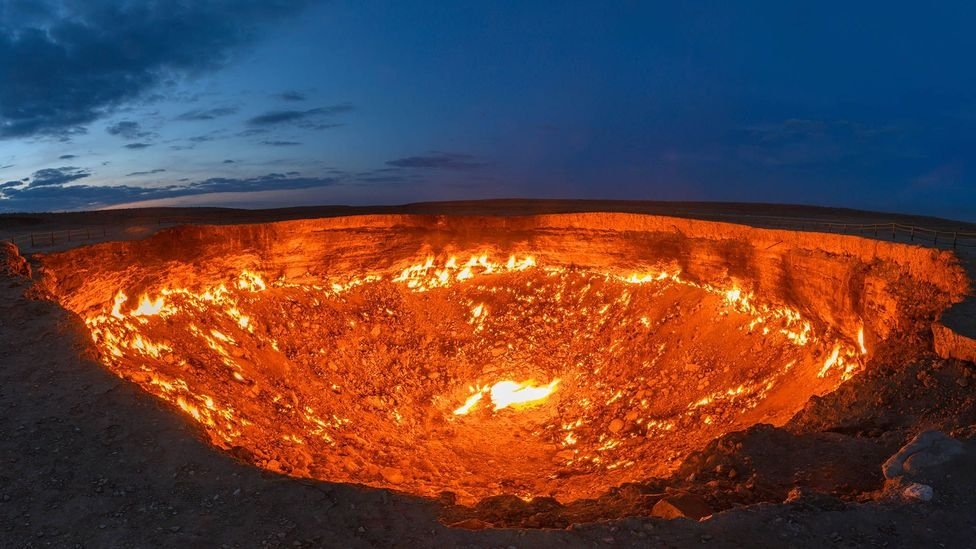
Why can't the 'Gate of Hell' that has been burning continuously for 50 years in Turkmenistan be filled? 4
A giant fire pit in Turkmenistan has drawn increasing scrutiny from environmentalists and the country’s government for its contribution to climate change.
`My understanding is that the fire pit was formed during the Soviet era when the Soviet Union was trying to drill for natural gas in the area,` said Stefan Green, director of Rush University’s Microbiome and Genomics Facility.
“At that time, drilling technology was not sophisticated enough.
`If it’s intentional, the idea is for it to burn off the gas instead of releasing it uncontrollably,` Green said.
The Darvaza fire pit – 70 meters wide and 20 meters deep – has become a tourist attraction with thousands of visitors each year.
`The first approach was quite scary because, at least when I went, there were no railings and nothing to stop you from falling,` Mr Green said.
`The hole is really big and the edge of the hole is the hottest, except for the big fire near the middle of the hole. At night it glows – it’s really an amazing sight.`
In 2022, Turkmenistan’s president instructed officials to find a way to extinguish the famous fire pit and capture the escaping methane.
“The uncontrolled release of natural gas is an environmental disaster and burning it is actually better.
With a population of 6.3 million, fewer people live in Turkmenistan than in New York City.
“There are a lot of natural gas fields in Turkmenistan,” Green said.
“This is the main cause of methane emissions leaks and the Darvaza crater is one such example… Anything we can do to help stop the release of greenhouse gases
A common suggestion is to simply fill the fire pit.
`Basically, you have a widespread gas leak,` he said.
Focusing exclusively on filling the crater could also distract from the main reasons why Turkmenistan is a top methane emitter.
“These craters are really a small part of the whole story,” Green said.
Refer to Newsweek






